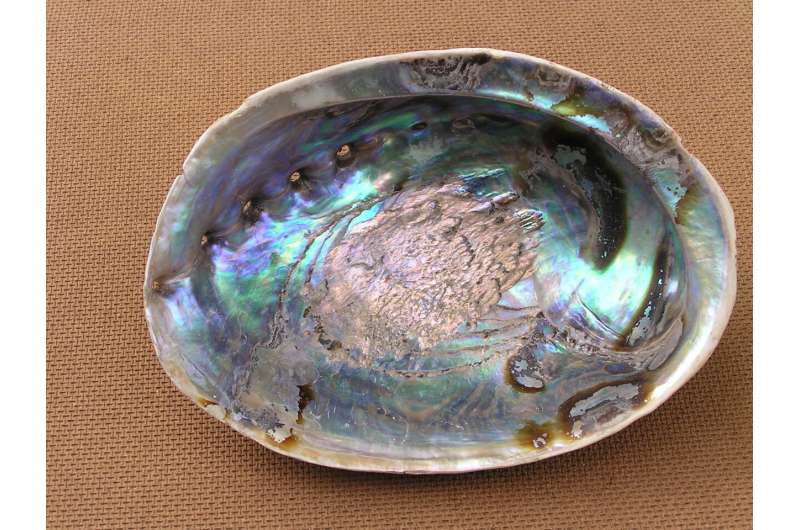This article has been reviewed according to Science X's editorial process and policies. Editors have highlighted the following attributes while ensuring the content's credibility:
fact-checked
proofread
New risk modeling can help Aotearoa's pāua industry adapt to climate change

The pāua industry is facing a range of challenges, as business and finance grapple with how to support the ecological role of this taonga species in our marine environment and protect one of our most valuable export commodities.
Warming seas, ocean acidification, increased sedimentation and also extreme weather events are all stressors impacting the health of pāua populations, their ecosystems, and the ability to harvest them.
To uphold the value of our commercial quota, pāua fisheries must become more resilient to the environmental changes.
New research from Sustainable Seas National Science Challenge has brought together science, business, policy and finance experts from NIWA, ANZ, the Pāua Industry Council and blue economy consultancy, Terra Moana Ltd.
Together, they have developed new risk modeling that's created an innovative "PAU2 climate related risk" bioeconomic model. The model is a tool for people who have financial interests in a pāua quota (e.g., quota owners, investors and financiers) to model scenarios that show financial trajectories of climate-associated risks.
"We've brought together an inter-disciplinary team that's developed a new way of looking at these challenges. The research has found that more exact understanding is needed about how levels of environmental stressors impact pāua biology and ecology," says lead researcher, Katherine Short from Terra Moana.
"With this understanding, fishery sectors can better account for the impacts of climate change, evolve where required, and collaboratively invest in responses."
The research study focused on PAU2—the Wairarapa coast commercial pāua fishery, where the commercial fishery runs from the Western side of Palliser Bay to Castle Point. The East Coast of the North Island is particularly susceptible to warming seas.
"The model considers the environmental risks from climate-related impacts to pāua populations and pāua growth rates," explains Tony Craig, the financial model and pāua lead from Terra Moana.
"To adequately understand the risks and ensure the sustainability and resilience of the pāua industry, it is vital that we collect and analyze data on these environmental changes" says Dean Spicer, ANZ New Zealand's Head of Sustainable Finance and part of the research team.
"This data can help inform better decision-making—including financial, economic, political and business decisions—and gives us the opportunity to consider how we can mitigate those risks."
This model can be used to support the rapidly evolving investor, banking and finance sector's environmental, social and governance (ESG) expectations to understand and plan for these risks when investing. This is critical to meet the obligations under New Zealand's CarbonZero Act, and also to attract global investors, who expect sustainability strategies and clear ESG reporting to be in place before they will commit capital.
More information: Upholding the value of pāua quota. www.sustainableseaschallenge.c … lding-the-value-of-p%C4%81ua-quota/
Provided by Sustainable Seas National Science Challenge





















